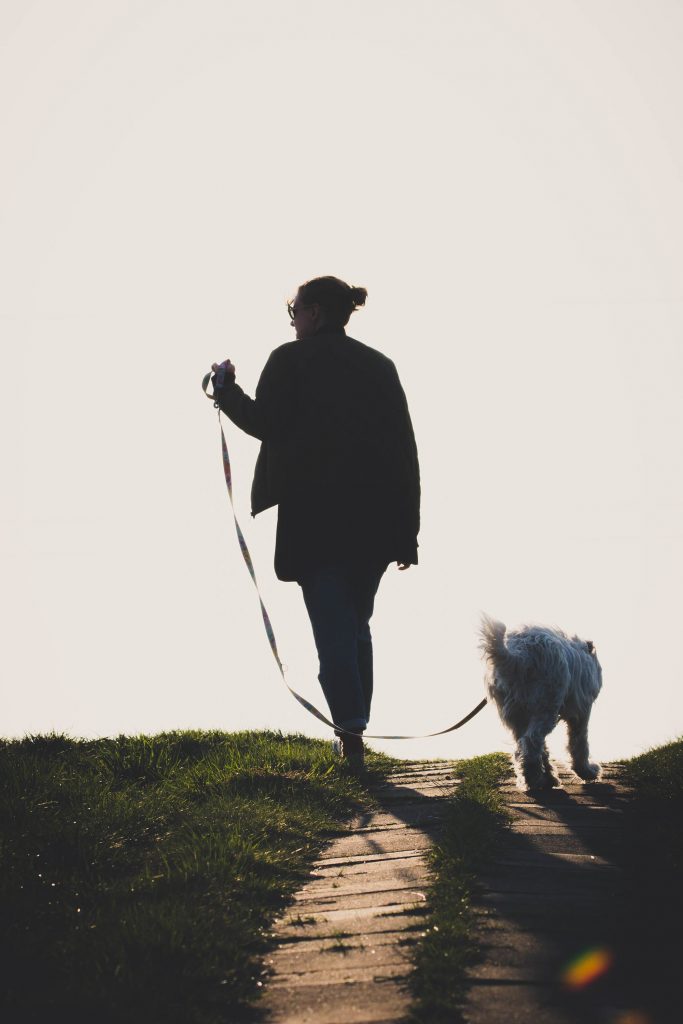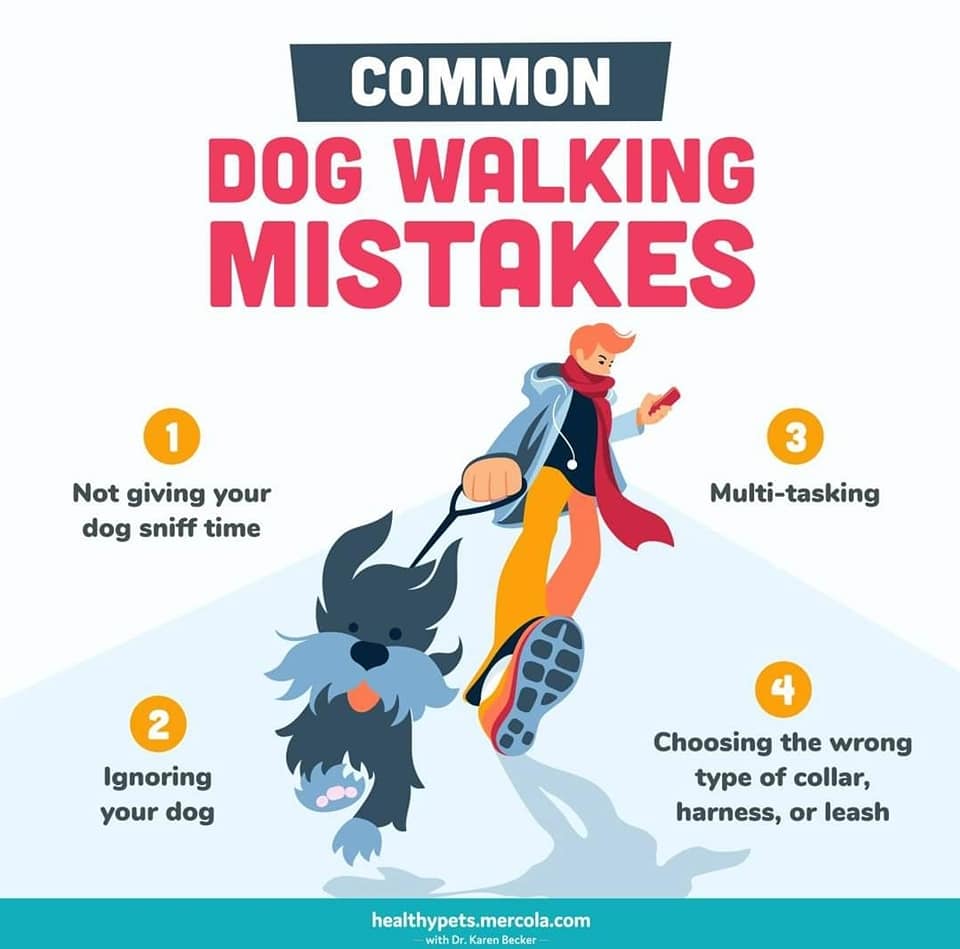
ANIMALS 101 – EXERCISE IS CRUCIAL FOR PETS, BUT WALKS ARE ALSO ABOUT MORE THAN JUST EXERCISE.
Walks are essential for the well-being of canine companions and when done correctly, with the right attitude, they can be very beneficial for us, as well. It is a commitment responsible pet parents make.
Walks are an opportunity for dogs to:
- Relieve themselves.
- Move their bodies.
- Get fresh air.
- Help with weight control.
- Reduce anxiety, boredom and depression.
- Interacting with their environment and “earthing”.
- Socialize with other humans and dogs.
- Strengthen their bond with you.
If you can’t do this daily (30-60 minutes) or walks are stressful for you or your pet, we suggest finding other ways to exercise and provide enrichment for them, like playing games in and around the home or by hiring a professional dog-walker. AbsoluteDOGS has a game for everything!

DIFFERENT KINDS OF WALKS (Dr Karen Becker)
1. Purposeful walks — These are typically short and have a specific goal, for example, walking your dog to her potty spot.
2. Training walks — These walks can be about improving leash manners and learning basic or advanced obedience commands. Remember to take some healthy training treats.
3. Mentally stimulating walks — Most leashed dogs don’t get to spend nearly as much time sniffing and investigating as they would like, so allowing your pet some time to explore is good mental stimulation for her.
4. Sniffaris — During these mentally stimulating walks, your dog takes the lead, you follow, and he gets to sniff whatever he pleases.
5. Power walks — Power walks to keep your dog’s frame strong, his weight in check, and help alleviate arthritis and other degenerative joint diseases. These walks can also be an essential method for ensuring your dog gets enough exercise.
6. Walks with friends — If your dog is comfortable around other dogs, consider meeting up with neighbours or friends with dogs for social group walks.
7. Different dog-walker walks — Everyone walks a dog a little differently, so the more members of your household who walk your dog, the more variety she’ll enjoy.
8. Change-of-scenery walks — Instead of heading outside in the same old direction, instead, buckle your dog in and drive a few blocks away or to a neighbourhood park or nearby hiking trail for your walk.
Also read: ANIMALS 101 – CHILD-FRIENDLY PETS WILL BE FOUND IN PET-FRIENDLY HOMES.
COMMON DOG WALKING MISTAKES
- Not allowing sniff time — Your dog’s most acute sense is her sense of smell. She explores and experiences the world through her nose.
- Ignoring your dog or multi-tasking — Unfortunately, there are pet parents who do everything but, pay attention to their dogs during walks. The activity becomes so routine that they do it without giving much thought to the furry fellow at the other end of the leash. This is a bad habit primarily for the danger of what your dog can get up to if you are not looking.
- Choosing the wrong type of collar, harness, or leash — Many pet parents don’t realize the importance of choosing the right type for their dog.
- Not taking advantage of different types of walks, mentioned above, to keep things interesting for both of you.

SAFETY FIRST
- Before the walk, test the road/tar/ground temperature. If you can’t keep the back of your hand on the ground for 5 seconds then it is too hot for their paws!
- Discuss with your veterinarian when your puppy’s immune system is strong enough to go for walks.
- Even if off-leash, always pack their harness and leash (no choke or pinch collars) and include an ID tag. They should be accustomed to wearing it before you attempt to take them for walks.
- Watch out for dog snatchers who follow your walking routines as well as any other hazards.
- Keep them hydrated and prevent them from drinking contaminated water.
- Do not let young children or the elderly walk animals alone.
- Pack a mini first aid kit.
- Go at their pace.
- Wear reflective gear.
KEEP IN MIND
- If you are having trouble with the walk, then get some professional help. This could be a trainer, if your pet just never learned to walk on a leash properly or a behaviourist if there are other underlying issues like anxiety or re-activity.
- Although walking is a great activity, some breeds might not be getting enough exercise for cardiovascular health through just a walk. For others you might have to start slower for shorter distances.
- When you do suburban walking, the other dogs barking, are not them “saying hello”, it is more like “death threats”. For re-active and anxious dogs this won’t be beneficial.
- Be mindful of fellow walkers. Never allow your dog to just approach another dog, even if they are friendly and especially not when that dog is on a leash because they might be fearful, re-active, aggressive, in pain or recovering from an operation.
- When going for hikes, make sure your pet is up for it, you have enough water, the trail is dog-friendly and never let your dog chase any wildlife.
The most important thing you can do to ensure a lifetime of enjoyable walks with your canine companion is to help them learn to be the perfect walking partner and be one too.
Next week we will look at a tough topic for any pet parent or rescuer; euthanasia.
WHEN YOU KNOW BETTER, DO BETTER!